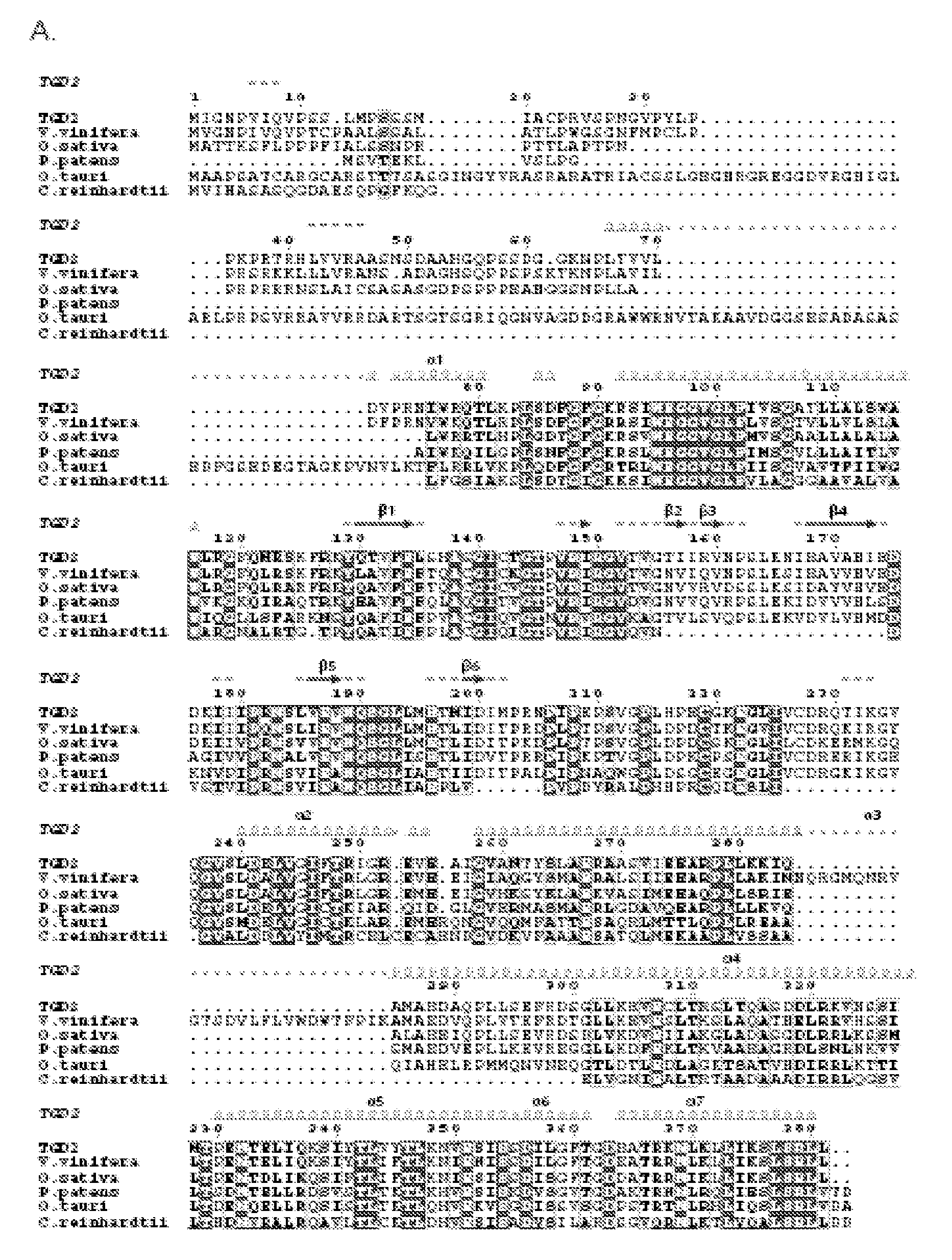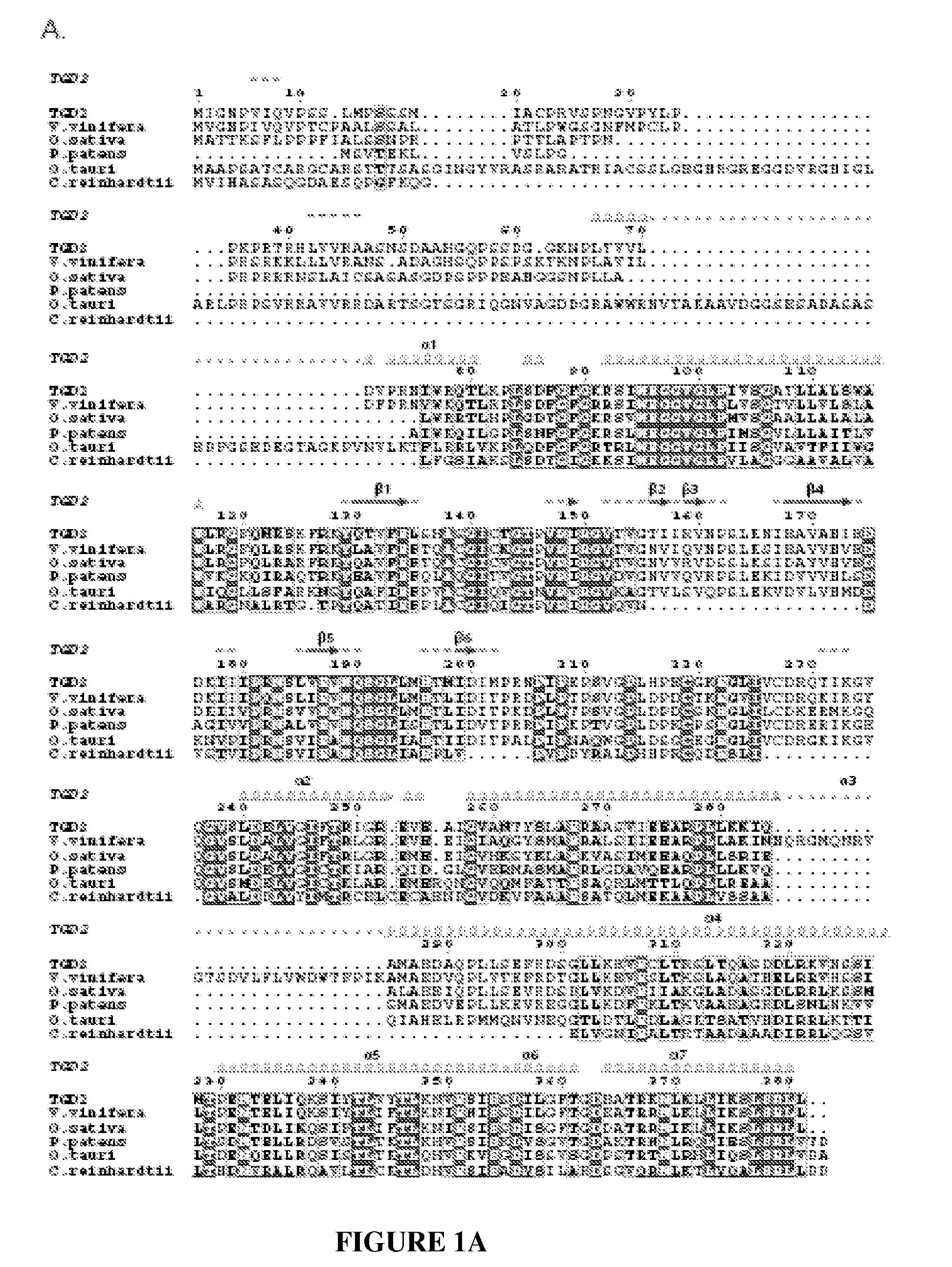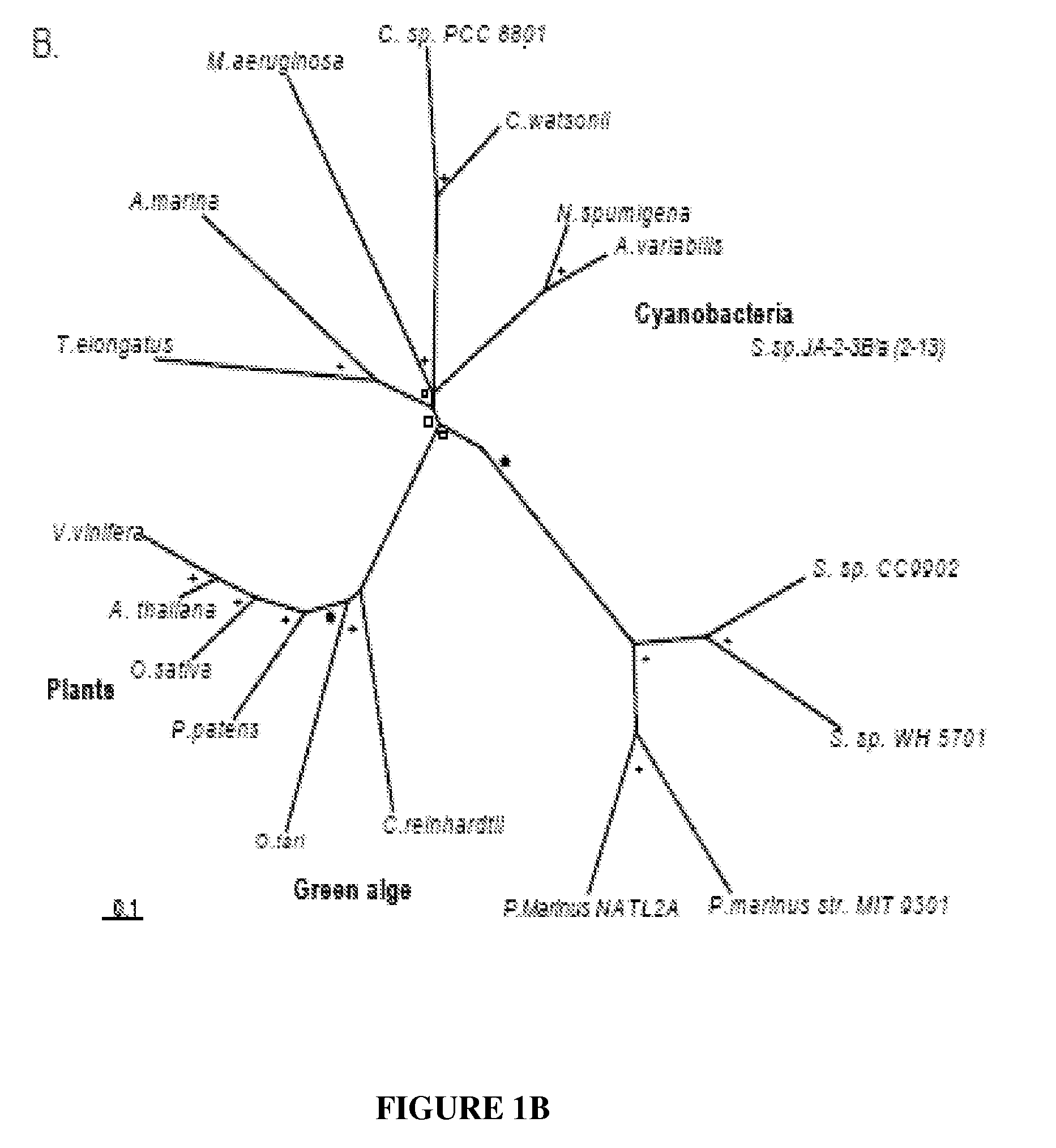Compositions And Methods Of A Phosphatidic Acid Binding Protein
- Summary
- Abstract
- Description
- Claims
- Application Information
AI Technical Summary
Benefits of technology
Problems solved by technology
Method used
Image
Examples
example i
Expression and Purification of DsRed-TGD2 Fusion Proteins
[0187]All the TGD2 truncated proteins used in this example were obtained from DNA generated by PCR using a TGD2-dTMD-pQE31 (also known as TGD2C-pQE31) plasmid template (22). Following digestion with NcoI and XhoI, the fragment was ligated into DsRed-plw01-His (a gift from Dr. Michael Garavito, Michigan State University, East Lansing, Mich.). Internal deletion mutants and / or point mutants were generated by site-directed mutagenesis approach on TGD2CDsRed-plw01 via PCR, with the primers and mutation sites listed in Table 1 (supra).
[0188]All fusion proteins were expressed in the Escherichia coli strain, BL21 (DE3) (Novagen, Madison, Wis.). An overnight pre-culture of LB medium (5 mL) was used to start a 200 mL culture in LB medium. The protein was induced with 50 μM IPTG (isopropyl-β-D-thiogalactopyranoside) at OD600 0.6-0.8, 16° C. and growth was continued overnight. Cultures were cooled to 4° C., washed twice and resuspended in...
example ii
[0192]Membrane lipid strips were purchased from Echelon Biosciences (Salt Lake City, Utah). The strips were first blocked with 3% bovine serum albumin in TBST (10 mM Tris-HCl, pH 8.0, 150 mM NaCl, and 0.25% Tween-20) for two hours and incubated in 0.5 μg / mL DsRed-TGD2 fusion protein solution in the blocking buffer at 4° C. overnight. The strips were washed 10 min for 3 times with TBST the next day and soaked in 3% bovine serum albumin in TBST with a Penta-His mouse monoclonal antibody (Sigma-Aldrich, St. Louis, Mo.) at 1:2,000 dilution at 4° C. overnight. The strips were washed twice with TBST and soaked in 3% bovine serum albumin in TBST with horseradish peroxidase-conjugated anti mouse antibody (Bio-Rad, Hercules, Calif.) at 1:20,000 dilution for an hour at room temperature. Following washing with TBST for 1 hour, the protein was detected by using the chemiluminescent detection system (Sigma-Aldrich).
example iii
[0193]The liposome association assay was performed as previously reported. (31). Briefly, lipids (dioleoyl-phosphatidylcholine, DOPC or dioleoyl-PA, DOPA) were incubated in TBS (50 mM Tris-HCl, pH 7; 0.1 M NaCl) at 37° C. for an hour followed by vigorous vortexing for 5 min. The liposomes were precipitated at 20,000 g and washed twice with ice-cold TBS.
[0194]Liposomes (200 μg) were mixed with purified DsRed-TGD2 fusion protein and TBS to make a final 100 μL solution. The mixture was incubated at 30° C. for 30 min and washed twice with ice-cold TBS by centrifugation at 20,000 g at 4° C. The liposome pellet mixed with sample buffer was analyzed by SDS-PAGE (28). Immuno-detection of the His-tagged protein was accomplished using the above mentioned Penta-His antibody at 1:15,000 and the anti mouse antibody at 1:75,000 dilution.
[0195]The protein band was visualized by chemiluminescent detection kit from Sigma. The autoradiography film was scanned, distinct prote...
PUM
| Property | Measurement | Unit |
|---|---|---|
| Acidity | aaaaa | aaaaa |
| Stress optical coefficient | aaaaa | aaaaa |
Abstract
Description
Claims
Application Information
 Login to View More
Login to View More - R&D
- Intellectual Property
- Life Sciences
- Materials
- Tech Scout
- Unparalleled Data Quality
- Higher Quality Content
- 60% Fewer Hallucinations
Browse by: Latest US Patents, China's latest patents, Technical Efficacy Thesaurus, Application Domain, Technology Topic, Popular Technical Reports.
© 2025 PatSnap. All rights reserved.Legal|Privacy policy|Modern Slavery Act Transparency Statement|Sitemap|About US| Contact US: help@patsnap.com



